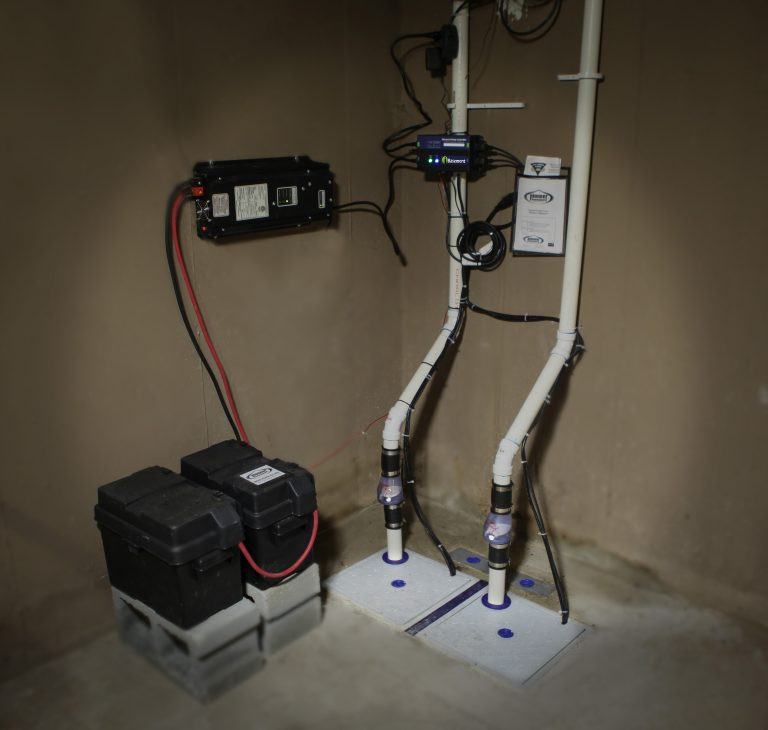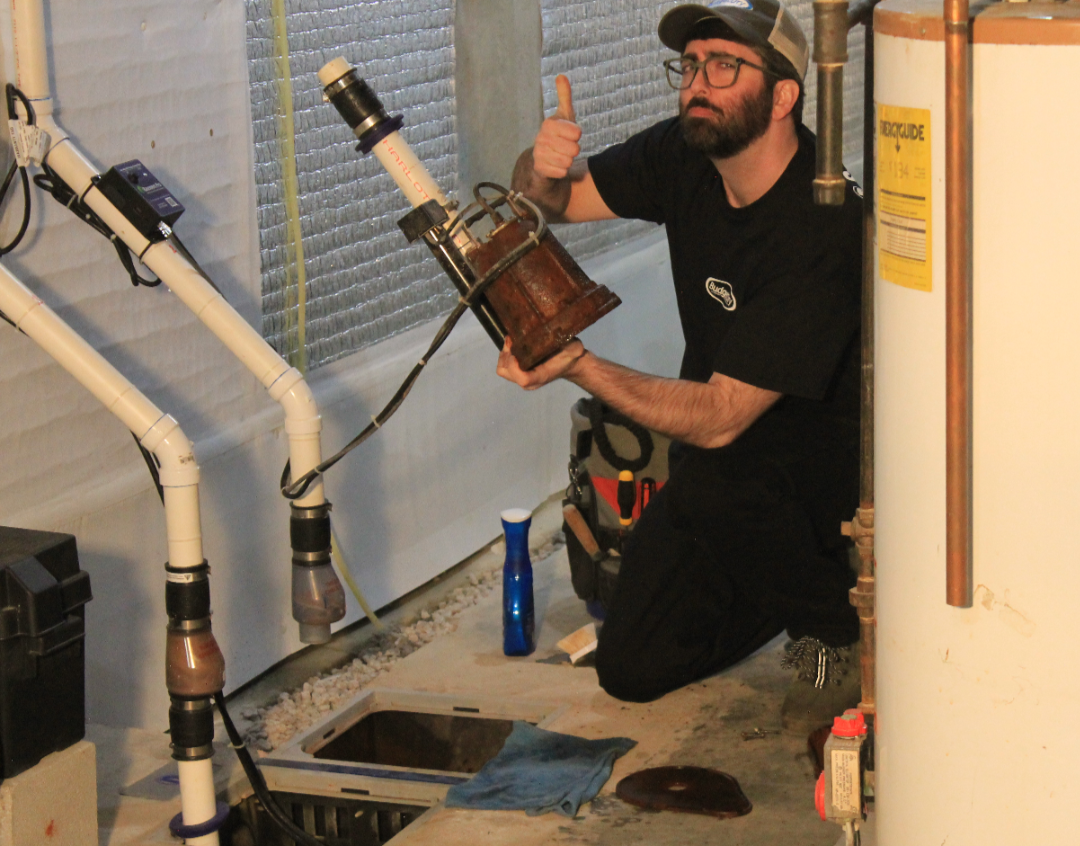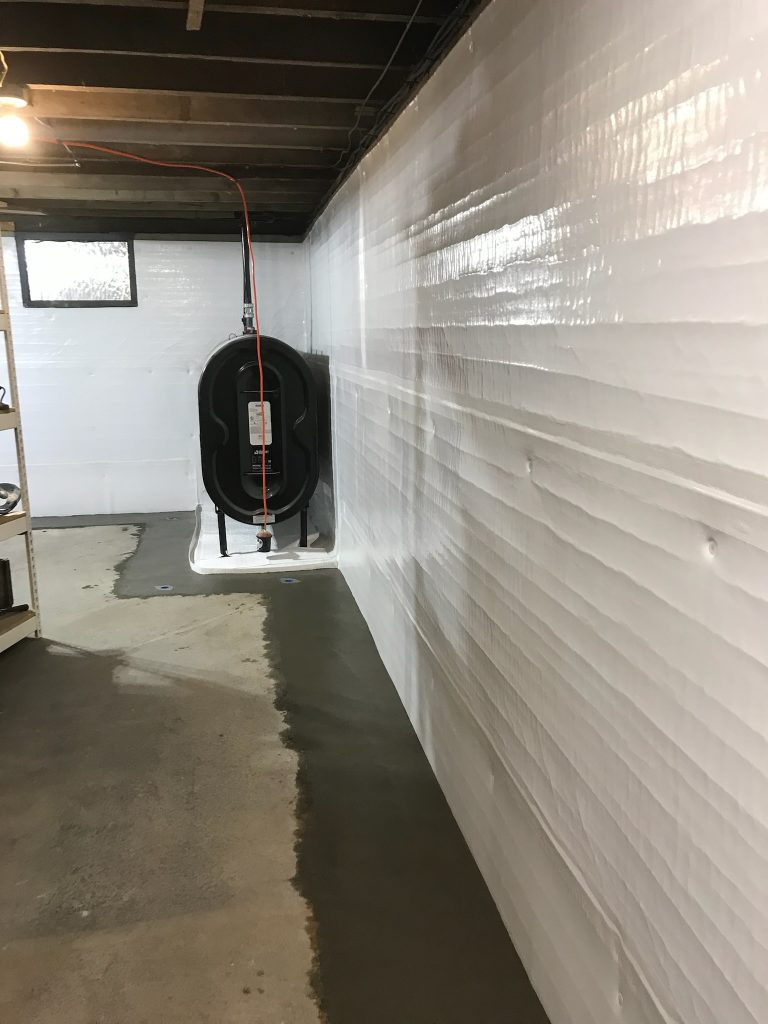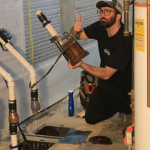You’ve probably experienced the stress of a leaky basement at least once in your life. But have you ever wondered about the science behind the solutions that keep your basement dry? It’s not simply about slapping on a coat of waterproof paint. Rather, it involves an extensive understanding of hydrostatic pressure, moisture dynamics, and the strategic use of materials and technologies. Let’s explore how these factors influence the effectiveness of basement waterproofing. Curious about the role of your local climate or soil type? We’ll get into that too. Stay tuned.
Understanding Basement Waterproofing
Why is basement waterproofing important? You might ask. It’s more than just a precautionary measure, it’s a vital step in maintaining the structural integrity of your home.
Water leakage in the basement can lead to numerous problems such as mould growth, foul odours, and damage to walls and flooring. These aren’t just unsightly, but can also pose serious health risks.
Basement waterproofing involves the application of specific sealants and coatings, and the installation of drainage systems, all designed to prevent water intrusion. It’s a technical process requiring a detailed understanding of how water behaves around a structure.
You’ve got to take into account the soil type surrounding your home, the slope of your land, and the level of the water table. These factors can affect the amount of water pressure exerted against your basement walls, potentially leading to cracks and leaks.
Waterproofing your basement isn’t just about keeping it dry, it’s about protecting your investment. It’s about preventing costly repairs down the road due to water damage.
And most importantly, it’s about creating a safe, healthy living environment for you and your family. So, understanding basement waterproofing is essential.
The Role of Hydrostatic Pressure
You need to grasp the concept of hydrostatic pressure and its role in basement waterproofing.
This pressure, a result of groundwater build-up, can exert significant force on basement structures, leading to leaks and structural damage.
Understanding Hydrostatic Pressure
Often, the root of basement water problems is hydrostatic pressure.
It’s critical for you to understand what hydrostatic pressure is and how it works if you’re to effectively waterproof your basement.

In essence, hydrostatic pressure refers to the pressure exerted by a fluid at equilibrium due to the force of gravity.
It’s the force that’s pushing water into your basement. It increases proportionally with depth measured from the surface because of the increasing weight of fluid exerting downward force from above.
In the context of your basement, the fluid is the ground water surrounding your home’s foundation.
When it rains or snow melts, the water table can rise and exert this pressure on your basement walls and floor.
If the hydrostatic pressure becomes too great, it can force water through cracks, joints, and porous material – leading to unwanted water intrusion.
The bottom line? Hydrostatic pressure isn’t a friend to your basement.
It’s a relentless force of nature that you need to properly manage to keep your basement dry.
Understanding this concept is essential to developing a robust waterproofing solution for your home.
Effects on Basement Structures
As we’ve seen, hydrostatic pressure is a persistent adversary in the fight against basement moisture. It’s essential to understand its effects on your basement structures. This formidable force can lead to notable structural damage if left unchecked.
Hydrostatic pressure acts on your basement walls and floor continuously, and its intensity increases with the depth of water in the soil. This pressure forces water through even the tiniest cracks in your basement walls and floor. Over time, these small cracks can expand, leading to more severe structural issues.
Additionally, the continual presence of water can degrade concrete, leading to crumbling or spalling. This weakens your basement structures, reducing their load-bearing capacity and potentially leading to significant problems down the line.
In extreme cases, hydrostatic pressure can even cause basement walls to bow or collapse, posing a serious safety risk. This is particularly true in areas with high groundwater levels or frequent heavy rainfall, where hydrostatic pressure can be especially intense.
Understanding the role of hydrostatic pressure and its effects on your basement structures is vital to effectively combat basement moisture. In the next section, we’ll discuss how to counteract this pressure with effective waterproofing solutions.
Counteracting Pressure With Waterproofing
To effectively counteract hydrostatic pressure and prevent the damage it can cause, waterproofing your basement is an essential step. This pressure, stemming from groundwater, can exert force on your basement walls and floors, leading to cracks and leaks over time.
It’s vital to understand that waterproofing isn’t just about keeping water out—it’s also about managing and reducing this pressure.
So, how do you achieve this? Primarily, it’s through the use of drainage systems and sump pumps. A well-designed drainage system redirects water away from your foundation, reducing the hydrostatic pressure.
Sump pumps, on the other hand, collect and expel water that’s seeped into your basement, further alleviating the pressure. They’re your basement’s first line of defense, particularly during heavy rains.
Additionally, you may also consider using waterproof membranes or coatings on your basement walls. These materials not only act as a barrier to water ingress but also help redistribute the pressure along the wall, lessening the impact on any single point.
Waterproofing Materials: A Closer Look
Now, let’s take a closer look at the materials used in basement waterproofing.
You’ll get to know the key types of waterproofing materials and how they differ from each other.
We’ll also guide you through the process of selecting the most suitable material for your specific needs.
Understanding Waterproofing Materials
Delving into the world of waterproofing materials, you’ll quickly realize the sheer variety available for different applications. It’s not just about selecting a material that prevents water ingress but also about choosing one that’s suitable for the specific conditions of your basement.
Understanding waterproofing materials begins with recognizing their primary function – to create a water-resistant barrier between your basement and the external environment.
However, their effectiveness depends on factors such as permeability, adhesion, flexibility, and durability.
Permeability relates to the material’s ability to prevent water from passing through. Lower permeability indicates higher resistance, making the material more effective at keeping your basement dry.
Adhesion is the material’s ability to stick to the basement surface. It’s essential because poor adhesion can lead to the material peeling off, leaving your basement unprotected.
Flexibility is another key factor. Waterproofing materials should be flexible enough to accommodate minor shifts in the building structure without cracking or tearing.
Durability, meanwhile, determines how long the material can withstand external conditions before needing replacement.
Material Selection Process
Having familiarized yourself with the key types of waterproofing materials, you’re well-equipped to tackle the next step – the selection process. This is where you need to carefully assess the specific needs of your basement and align them with the characteristics of the waterproofing materials.
First, consider the nature of the water problem in your basement. If you’re dealing with condensation, a waterproof paint or a vapor barrier might suffice. For more serious issues like leaks or flooding, you might need to opt for more robust solutions like an interior water drainage system.
Next, evaluate the construction design and material of your basement. If it’s built with concrete, a cementitious waterproofing material might be a good match. But if it’s made of wood, you might’ve to go for a waterproofing membrane.
You should also take into account the climatic conditions in your area. If your residence is in a region with heavy rainfall, select a waterproofing material with a high resistance to hydrostatic pressure.
Lastly, consider your budget. While some options may be cheaper upfront, they may not offer long-term protection and could lead to costly repairs in the future. Consequently, choose wisely.
The Science of Drainage Systems
While you mightn’t often consider it, the science of drainage systems plays an essential role in guaranteeing your basement remains dry and damage-free. These systems, often hidden in the ground, work tirelessly to redirect water away from your home’s foundation.
Let’s dive deeper. The core component of any drainage system is the drain tile – a perforated pipe installed around the foundation. Its job is to collect excess water from the soil and divert it away from your foundation. When it rains or snow melts, water seeps into the soil. The drain tile captures this water before it can reach your basement.
Gravity plays a key role here. Most drain systems rely on gravity to move water from higher to lower ground. But what if your home is on flat land or at the bottom of a slope? You’ll need a sump pump. This device pumps water from the drain tile out to a safe distance from your home.
The effectiveness of your drainage system depends on proper installation and maintenance. Blockages can render it useless. Regular checks and cleanups guarantee it’s doing its job, keeping your basement dry and your home safe.
The Importance of Soil Properties
You mustn’t overlook the impact of soil properties when considering basement waterproofing solutions.
Knowing your soil type is essential as it plays a significant role in water absorption and thus influences the effectiveness of your drainage system.
Consequently, a thorough analysis of your soil’s properties can guide you towards the most efficient and reliable waterproofing techniques for your basement.
Understanding Soil Types
In the domain of basement waterproofing, the type of soil surrounding your home plays a vital role. It’s not just about the amount of rain you get; the soil’s properties can greatly impact water movement and accumulation.
Primarily, you’ll encounter three soil types: clay, silt, and sand. Each type boasts unique characteristics that influence water infiltration. Clay, for instance, has compact particles, limiting water movement and potentially leading to saturation around your basement.
Silt, on the other hand, possesses medium-sized particles. While it drains better than clay, it still holds onto water longer than ideal. Finally, sand features large, coarse particles that grant it excellent draining properties but poor water retention.
Understanding your soil type is essential for two main reasons. First, it informs the waterproofing techniques best suited for your property. Clay soils may require more robust solutions like drain tiles or sump pumps, while sandy soils might benefit from sealants or coatings.
Additionally, knowing your soil type can guide preventive measures to avoid future water intrusion. This might involve grading your property or installing French drains to redirect water away from your foundation. It’s all about turning knowledge into action.
Basement Walls: Preventing Seepage
Water can sneak into your basement through the walls, creating a damp, musty environment that’s not ideal for living or storing items. The culprit? Hydrostatic pressure, which pushes water from the soil into your basement walls.
It’s a silent, persistent force that can lead to considerable seepage if not addressed.
To combat this, various waterproofing methods are employed. First, there’s the application of waterproofing coatings and sealants. These substances are designed to prevent water penetration by forming an impermeable barrier on your walls.
Remember, it’s essential to apply these coatings to both the interior and exterior walls for maximum effectiveness.
Next, consider installing a weeping tile system. This setup involves a network of pipes placed around your basement foundation. The weeping tile system captures groundwater and redirects it away from your walls, reducing the hydrostatic pressure.
Lastly, consider the material of your basement walls. Concrete, for instance, is porous and can absorb water, leading to seepage. Using waterproof materials such as plastic or vinyl can greatly reduce this risk.
Preventing seepage in your basement walls isn’t just about the right techniques but also understanding the science behind them.
Innovative Waterproofing Technologies
Driven by technological advancements, the field of basement waterproofing has seen the emergence of innovative solutions that greatly enhance the protection of your home.
In recent years, we’ve welcomed the advent of smart drainage systems. These aren’t your typical sump pumps. They’re intelligent, equipped with backup batteries and alarms to alert you of any potential water breaches.
Next in line is the use of crystalline waterproofing technology. This isn’t just a coating, it’s a game-changer. It involves the application of a crystalline compound to your basement walls. When mixed with water, this compound forms insoluble crystals that block the pores in the concrete, effectively preventing water intrusion.
Let’s not forget the role of liquid rubber membranes. These spray or brush applied solutions form a seamless, impervious barrier on the surface of your basement walls and floor. They’re flexible, resistant to cracking, and guarantee a watertight seal.
These innovative technologies aren’t just functional, they’re efficient and reliable. They’re designed with your home’s protection in mind, offering an extra layer of defense against water damage.
Don’t just waterproof, use technology that’s on the cutting-edge. Your home deserves it.
Maintaining Your Waterproofing System
Having your home equipped with these advanced waterproofing technologies is a major step towards keeping your basement dry. However, don’t forget: maintenance is key. Regular checks and upkeep will guarantee your system’s longevity, keeping it efficient and effective.
First, you’ve got to inspect the sump pump. It’s the heart of your waterproofing system, pumping out any water that seeps in. Test it periodically, by pouring water into the sump pit until the pump activates. If it doesn’t, you’ve got a problem.
Next, keep your gutters and downspouts clean. They play a vital role in directing rainwater away from your home’s foundation. Any blockage could lead to water pooling around your house, putting pressure on your waterproofing system.
Lastly, check for cracks in your basement walls and floors. Even the tiniest fracture can let water in. If you spot any, get them sealed as soon as possible.
Waterproofing Solutions: A Comparative Analysis
When it comes to your home’s defense against water damage, there’s a plethora of waterproofing solutions available, each with its own merits and shortfalls.
Firstly, you’ve got interior water drainage. This approach is less invasive and typically more cost-effective, but it doesn’t prevent water from entering your basement. It merely manages the water once it’s inside, directing it from the perimeter to a sump pump for removal.
Lastly, there are vapor barriers, which are applied to the interior walls to prevent condensation. They’re an effective complement to other methods but not a standalone solution.
Just like a sturdy umbrella shields you from a downpour, your basement’s waterproofing system protects your home from the relentless assault of hydrostatic pressure and moisture. Remember, the effectiveness of your shield hinges on the right choice of materials, a well-designed drainage system, and regular maintenance. From soil properties to climate impacts, each factor plays an essential role. So, stay informed, compare solutions, and guarantee your basement remains a safe, dry haven.




